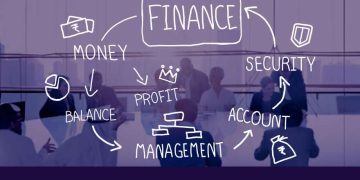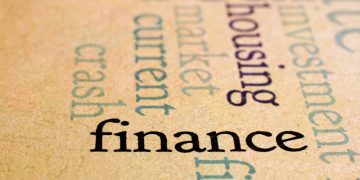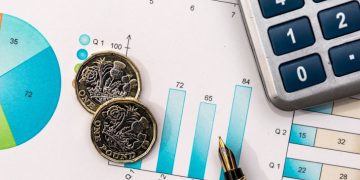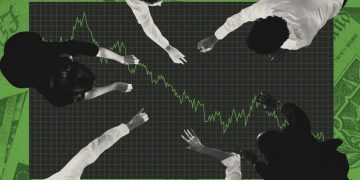Introduction:
In the world of investing, few strategies have been as widely endorsed as passive investing—often encapsulated in the simple mantra of “buy and hold.” The core idea is that, over the long term, markets tend to rise, and investors who hold onto their investments will see their portfolios appreciate in value. This strategy is particularly popular among retail investors and advisors, especially during times of economic stability or bull markets.
However, in today’s increasingly volatile and unpredictable financial landscape, passive investing may no longer be the panacea it once seemed. Whether it’s a global recession, financial crisis, or political instability, significant market swings have made passive strategies less effective, particularly for investors looking to protect their capital or outperform the market. In this article, we’ll explore why active management remains a crucial tool for investors, especially in times of market turbulence. We’ll examine the limitations of the “buy and hold” strategy, the advantages of active management, and how human psychology and market sentiment can affect investment decisions.
Market Cycles:
Markets are inherently cyclical, characterized by periods of rapid growth followed by inevitable downturns. Market volatility, which includes sharp corrections, recessions, financial crises, and even political instability, can significantly disrupt the long-term growth trajectory that passive strategies rely on. The 2008 global financial crisis, the COVID-19 pandemic market shock, and ongoing geopolitical uncertainties have shown how vulnerable passive strategies can be when markets experience sudden and drastic declines.
The “buy and hold” approach assumes that the market will always recover in time, but this assumption fails in periods of prolonged downturns or when structural changes occur that fundamentally alter the market landscape. For instance, the long recovery period post-2008 required investors to hold through years of stagnation before markets regained their footing. While passive investors may have eventually seen positive returns, many suffered significant losses before any rebound occurred, and for some investors, the emotional toll of holding through market crashes was too much to bear.
Moreover, markets don’t always return to their previous highs, especially in the case of secular bear markets, where long-term market conditions favor stagnant or declining performance. A strategy of simply buying and holding, without any adjustments or response to these changing conditions, can leave investors exposed to extended periods of underperformance.

Active Management Advantage:
One of the primary advantages of active management is its ability to adapt to shifting market conditions. Active managers are not beholden to a specific index or set of assets; instead, they have the flexibility to adjust their portfolio based on economic forecasts, market sentiment, and macro factors. When markets are volatile or face challenges like recessions or financial crises, active managers can protect capital by shifting allocations, reducing exposure to certain sectors, and hedging risks.
For example, during the COVID-19 market crash, many passive funds took a hit due to their blanket exposure to the broader market. Active managers, however, were able to identify underperforming sectors, sell off riskier positions, and shift investments toward more resilient industries, such as technology, healthcare, and renewable energy. This proactive management allowed active investors to minimize losses and even capitalize on the rebound in sectors that were poised for growth.
In addition to capital protection, active managers are also well-positioned to exploit market inefficiencies. While passive investing is built on the idea that markets are efficient, active management can take advantage of dislocations in the market—whether due to macroeconomic events, earnings surprises, or sector rotations. In volatile markets, these opportunities can lead to outperformance that is difficult to achieve with a passive, buy-and-hold strategy.
Active managers also have the flexibility to capitalize on emerging trends, such as technological innovations or shifts in consumer behavior. By staying on top of market developments and being responsive to changes, active managers can position portfolios to capture the upside of emerging opportunities while avoiding potential risks.
Investor Behavior:
While the debate between active and passive investing often centers around financial performance, investor behavior plays a key role in shaping outcomes. Research in behavioral finance shows that human psychology and market sentiment can significantly influence investment decisions, often leading to emotional mistakes that affect portfolio performance. Investors are prone to herding behavior, where they follow market trends without conducting proper due diligence. Fear and greed are powerful motivators, especially during periods of extreme market volatility.
In a volatile market, these psychological factors can cause investors to panic and sell during downturns or overinvest during euphoric periods. Passive investors, who are generally advised to stay the course, may find it difficult to stick to their strategy when the market experiences significant swings. Active management offers a solution by providing professional oversight that can help prevent emotional decision-making. Active managers can reassess positions based on changes in market conditions and adjust their strategy accordingly. They can also help investors stay focused on their long-term goals, preventing them from reacting to short-term market noise.
For example, during market sell-offs, investors might be tempted to liquidate their holdings out of fear, leading to realized losses that could have been avoided with more active intervention. Active managers, however, are likely to maintain a long-term perspective, making adjustments based on risk assessments rather than short-term emotional responses.
Conclusion:
While passive investing has its merits, particularly for investors who are comfortable with a long-term, buy-and-hold approach, the myth that it is the best strategy in all market conditions does not hold up in today’s volatile environment. The market is no longer a stable, predictable entity; it is shaped by an array of economic, geopolitical, and technological factors that are constantly evolving. During periods of economic turbulence, financial crises, or political uncertainty, relying on a passive strategy can expose investors to significant risks.
Active management, with its flexibility and responsiveness, offers a compelling alternative. Active managers can protect capital, mitigate emotional decision-making, and capitalize on market opportunities that passive investors might miss. While it may not guarantee success in every market environment, active management provides a level of agility and risk mitigation that is critical in a world where market conditions can change in an instant.
In a complex and unpredictable market, active management is not just a luxury—it is a necessity. The ability to adapt, manage risks, and seize emerging opportunities gives active managers an edge in navigating the increasingly volatile financial landscape.





























